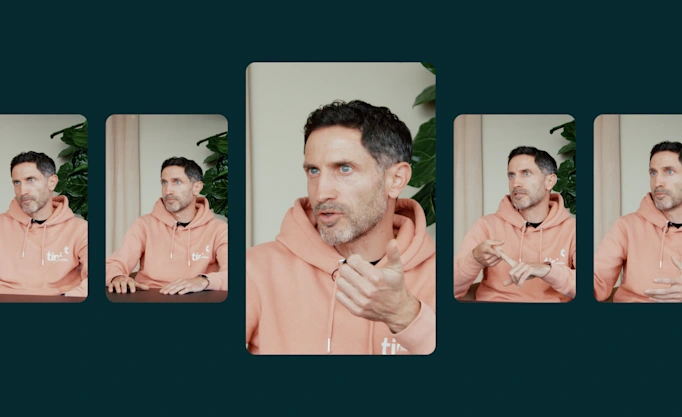3 ways open banking can boost financial inclusion

Rafael Plantier, Tink’s UK & Ireland Country Manager takes a look at the topic of financial inclusion, and how open banking technology can open the digital doors to financial services for many more people, while helping businesses operate more efficiently.
Open banking technology can help improve financial inclusion in 3 key ways.
By allowing businesses to access more meaningful data than credit checks allow, to get a better understanding of their customers.
By digitalising the sub-prime application process to improve acceptance rates and reduce fraud.
And by providing an easier way to identify customers during the onboarding process.
What springs to mind when you hear the phrase “open banking technology”? It’s often talked about in the same breath as giving people an overview of all their bank accounts in one place, offering personal finance management (PFM) tools that give people better financial insight, and bringing high-net-worth services to the masses.
All of this is of course true, and is transforming the financial services being created across Europe. But it’s also about much more - or much less - than that. Essentially, open banking technology can be thought of simply as a way of exchanging financial data, that can be plugged in wherever the data is needed. In this context, it can play a huge part in the services people use every day, and can be a real driver of financial inclusion, as I see it, in three key ways.
1 - Access to the mainstream
Swathes of people every year are effectively pushed into sub-optimal financial products, or are excluded altogether, simply because the data isn’t stacked in their favour. This is not only bad for the consumer, but it also means many businesses miss out on good would-be customers because they fall foul of the risk profile.
There are people who might be good payers but simply don’t have much financial history on traditional databases. This is where open banking and the move to open finance will be crucial, to enable businesses to aggregate data from current accounts as well as other financial services such as mortgages and insurance. It widens the scope of data that can be used by a business to better understand a customers’ credentials.
If someone has recently arrived in a new country, they may have a whole financial history somewhere else, but it’s not easily visible to the business that’s trying to onboard them, and the customer may be refused. Similarly, a younger person who wants to access financial services for the first time can suffer the same fate because of the lack of a traditional track record.
Of course, most companies aren’t excluding good potential customers mindfully - that would be against their own interests. But it is a by-product of the risk criteria they have set themselves within their regulatory framework. Now, we’re not saying a business should change it’s risk appetite to refuse fewer customers. Instead, it’s possible to gather more meaningful information that increases the chances of approving people.
Open banking technology can give businesses access to data from thousands of financial institutions across Europe, that can go beyond current account data to include loans, credit cards, investments, savings and more, through one plugged in interface. The opportunities for businesses to get a much deeper understanding of someone’s financial history in a quick, simple, cost-effective way are vast, and can radically transform the number of people who can access mainstream financial products.
2 - Improving sub-prime approval rates
For those most likely to be financially excluded, the sub-prime application process can still be overwhelmingly paper based, by faxing or scanning payslips and statements for instance. From the perspective of the business, this is of course, much more easily open to fraud and impacts acceptance rates for everyone.
Proof of income could instead be instantly shared from the customer’s bank account to the business that’s onboarding them. Regardless of whether the money in the account is entirely cashed out and people don’t spend digitally, the income can be verified in real time, directly from the bank. While fraudulent or abnormal accounts can be more easily identified due to the typical lack of income and activity. This significantly upps the chances of people being accepted, while improving efficiency and saving the business time and money.
3 - Proving ownership as well as identity
Giving more people access to financial services also entails being able to prove who they are. Verifying a new customer’s identity has layers to it that require not only proving they exist, but that they own or control the services in their name. Having a valid passport only goes so far in helping to confirm someone is a real person, and what businesses often need to prove is that it is the person they are engaging with at that moment in time. Showing someone has access and control of a bank account is, I think, one of the best ways of doing this.
In some instances, micro deposits, where a few pennies were paid into an account, with the user verifying how much had been deposited to show they had access, was the traditional way of doing this. But now, this can be done with open banking technology, in a much cheaper way for the business and a much less intrusive way for the customer.
The business can ask the new customer to link to their bank account, and authenticate as they usually would in their own banking app, taking seconds and leaving no doubt that the customer is who they say they are, and making it easier for people to prove their identity, wherever they are from.
Inclusion for the masses
Open banking isn’t just a “big bang” that is revolutionising financial services, it has the power to open up access to financial services for many more people, widening the pool of potential customers for businesses, while improving efficiency and significantly reducing operational costs.
Open banking can give everyone the opportunity to make sure they aren’t unwittingly in products or services that are sub-optimal - simply because of a lack of time, knowledge or accessible data.
More in Open banking

2025-11-20
3 min read
Tink powers the UK’s first cVRP transaction with Visa A2A
In partnership with Visa, Kroo Bank, and Utilita, we’ve just helped demonstrate the UK’s first commercial variable recurring payment (cVRP) using the Visa A2A solution – and it’s a big step forward for how people make regular payments.
Read more

2025-06-09
11 min read
The case for “Pay by Bank” as a global term
Thomas Gmelch argues that "Pay by Bank" should be adopted as a standard term for open banking-powered account-to-account payments to reduce confusion, build trust, and boost adoption across the industry.
Read more

2025-06-02
3 min read
Tink joins Visa A2A – what it means for Pay by Bank and VRP
Visa A2A brings an enhanced framework to Pay by Bank and variable recurring payments (VRP) in the UK, and Tink is excited to be one of the first members of this new solution.
Read more
Get started with Tink
Contact our team to learn more about what we can help you build – or create an account to get started right away.
